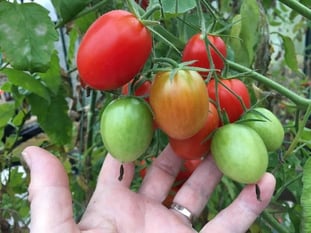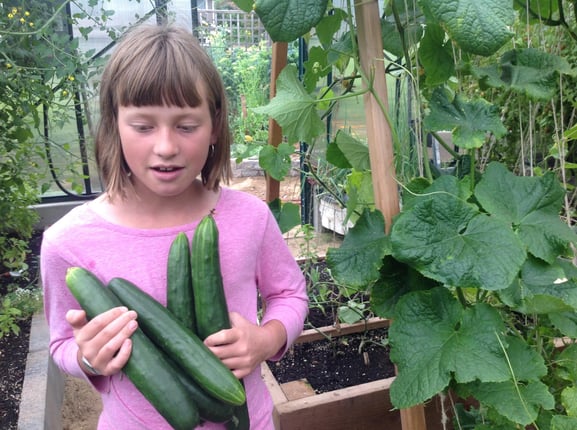Quick Answer:
What are the tips for ordering seeds and supplies for hobby greenhouse growing? To succeed in hobby greenhouse gardening, it’s crucial to read seed catalog fine print carefully—choosing parthenocarpic varieties for cucumbers and zucchinis that don’t require pollination, selecting heat-tolerant and slow-bolting plant varieties, and using foliar fertilizers for cold soils. Understanding pollination needs, temperature tolerance, and plant growth habits ensures better yields and healthier crops year-round. Starting seeds indoors, like onions in January, and adapting to your greenhouse environment helps optimize growth and harvest success.
Before You Order Seeds for Your Hobby Greenhouse, Read the Fine Print

When I started growing in my Greenhouse Garden a few of my favourite plants stopped working for me. That's what I learned to read the catalog fine print and adapt my shopping for a better hobby greenhouse growing.
Why you should read seed packet fine print
- The bugs we rely on to pollinate our cucumbers are not usually buzzing in our greenhouse in the summertime.
- The heat we get in the early seasons of greenhouse gardening is sometimes too much for plants that prefer cooler air.
- Growing taller plants make better use of the entire greenhouse growing area.
Tips for ordering seeds and supplies
Pollination
Before you grow anything in your greenhouse, be sure to check how your favourite plants are pollinated. Lemons tomatoes and strawberries grow without insect pollination but fruit better with insects or a little help from the gardener. Small bees, a soft paintbrush or even an electric toothbrush to vibrate pollen loose will boost fruit numbers and quality on different plants.
 Tomato flowers, for example, have both male and female flower parts on every bloom but with heat above 90 F or 32 C, pollen dies and fruits never form. Catalogues list heat tolerant (greenhouse) types of tomatoes such as Marbonne and Margold. But all you need are indeterminate (also called vining) plants because they keep growing up and producing new blooms as they grow. Add a little summer shade to keep temperatures lower on the hottest days and touch bloom clusters lightly with a vibrating electric toothbrush to help the male pollen fall and contact the sticky female bits.
Tomato flowers, for example, have both male and female flower parts on every bloom but with heat above 90 F or 32 C, pollen dies and fruits never form. Catalogues list heat tolerant (greenhouse) types of tomatoes such as Marbonne and Margold. But all you need are indeterminate (also called vining) plants because they keep growing up and producing new blooms as they grow. Add a little summer shade to keep temperatures lower on the hottest days and touch bloom clusters lightly with a vibrating electric toothbrush to help the male pollen fall and contact the sticky female bits.
Parthenocarpic
This one word is key to success in a hobby greenhouse. It is important to look for it in catalogues, especially under listings of cucumbers and zucchini.
A parthenocarpic plant makes fruit without pollination and, if grown with other parthenocarpic types, the fruit is seedless.

Gynoecious mean pollination is needed by insects moving pollen from male to female flowers on the same plant (Monoescious) or male to female flowers on different plants (Gynoecious.) Unless you are willing to wield a paintbrush to move pollen between the sexes, the fruit will be limited with these seed-producing types grown in your greenhouse.
Parthenocarpic cucumbers like Sweet Success do not need pollination or pollination help of any kind. Other William Dam parthenocarpic cucumbers include Lisboa F-1, Piccolino F-1, Salad Bush and Iznik.
“Greenhouse” cucumbers in catalogues are Parthenocarpic varieties needing warmer conditions. You can grow these in your greenhouse earlier than May if you are willing to heat your greenhouse. Since I also grow cool tolerant arugula and spinach at the same time, I stick to using parthenocarpic seeds and I don’t aim for greenhouse parthenocarpic seeds.
Johnny’s Seeds lists parthenocarpic cucumbers like Corinto, Diva and Nokya as well as specialized, warm temperature greenhouse types Quirk, Excelsior and Picolino. Rare Seeds lists Beit Alpha, China Jade and Muncher as parthenocarpic.

Short Days/Bolting
Old-school spinach, like my old favourite Bloomsdale, usually needs short days and a cool climate. In northern climates, this means September to April in a cool greenhouse. This makes them perfect in your late fall, winter or early spring greenhouse. In really cold climates you may need to cover them with an extra fabric layer to keep them alive in winter.
But the trouble with cool-season short-season plants is once they get big enough to produce a bumper harvest, they suddenly bolt as the days get longer in spring. This means they get tall, flower and set seed. Newer cold-tolerant varieties, less dependent on short days (in Johnny’s catalogue) include Space and Corvair. Vesey’s also lists Space and Esalade as bolt resistant and William Dam lists Olympia as slow bolting and reflect as heat tolerant. If you are growing in your greenhouse and your spinach fails to delight, try these newer varieties.
Spray on Fertilizer:
Green plants need nitrogen. In cold soils in the early spring greenhouse, the microbes that release nitrogen to the plants can’t function. Products like fish or seed meal need warm soil before they trigger green plant growth. This is why specialty fertilizers like the ferticare products work so well. They are instantly available because they can be sprayed on leaves for faster uptake, making cold soils irrelevant.
I have been growing in my greenhouse for over fifteen years now and I am still learning to read the fine print. I still see new varieties of plants being introduced. If you are new to greenhouse growing, I strongly recommend to read the fine print in your catalogues. You’ll be sure to discover a new plant or plant type to suit you and your greenhouse to perfection.
P.S.
January is the perfect time to start your main onion crop. I suggest starting Spanish onions (also called yellow onions) in an open tray in your house over a heat mat. As they get bigger bring the tray out to your warming hobby greenhouse in March and keep growing them in the same tray until it is time to plant them in your garden in May.



